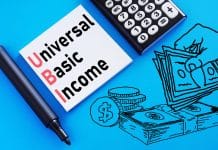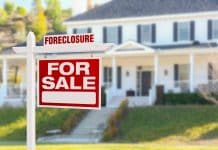
You may have come across the term “subprime mortgage.” Do you understand what that means? How does it relate to you as a homebuyer? This information can be an important component in your housing journey because it can give you an idea of the type of mortgage you want. It is important to note that subprime mortgages have evolved into a new mortgage. Now referred to as non-prime (or non-qualified) mortgages, they are extremely similar but still have some differences.
Understanding a Non-Qualified Mortgage
A non-qualified mortgage is a type of mortgage designed for borrowers with “subprime” eligibility like a low credit score. There are multiple types of non-qualified mortgages. Non-qualified mortgages usually come with higher interest rates due to the fact that the borrowers don’t have good credit standing or other “qualified” rate eligibility.
The interest rate provided to borrowers is based on multiple factors. Your credit score, down payment, amount of late payments, and type of delinquencies on your credit report can impact your rate.
No longer referred to as subprime mortgages, they have taken a new form. The term non-prime has no real legal definition. This term stems from the federal government’s definition of a “qualified” mortgage (QM) and a “non-qualified” mortgage (non-QM). These mortgages have safer guidelines and more protections for everyone involved. Financial institutions need to look at the borrower’s ability to repay the loan before they are able to issue it.
Different Types of Non-Qualified Mortgages
There are four main types of non-qualified mortgages. These include fixed-interest mortgages, adjustable-rate mortgages (ARM), interest-only mortgages, and dignity mortgages.
Fixed-Interest Mortgages
A popular type of subprime mortgage is a fixed-rate mortgage. The term length for this mortgage is typically 40 or 50 years (compared to the normal 30 year loan). The longer loan terms provide the borrower the opportunity to have a lower, more manageable monthly payment. Even though the monthly payment is more affordable, the loan spends more in interest because it is higher and longer to deal with. Each financial institution has their own rates!
Adjustable-Rate Mortgages (ARM)
An ARM begins at a fixed-interest rate but then switches to an ARM. From there, the interest rate can change frequently. Usually the fixed-rate is there for a couple years but then goes into an ARM for the remainder of the loan.
The amount that the interest rate will be once the fixed-rate portion of the mortgage is complete is based on an index and a margin. One popular index is ICE LIBOR. Once the rate switches from fixed to ARM then the borrower usually sees their mortgage rates increase. While interest rates have the potential to decrease, they typically end up being higher.
Interest-Only Mortgages
For the first portion of this loan, principal payments are postponed. This means the borrower is only responsible for paying the interest (mortgages consist of both the principal portion and the interest rate). The length of time that the borrower will only pay off the loan varies. These terms are usually 5, 7, or 10 years. During this time the borrower can also put payments towards the principal balance of the mortgage but it isn’t necessary. Once that first portion of the mortgage is complete, it is now time for the borrower to officially begin making payments on their principal balance. However, instead of choosing to pay the principal balance, the borrower can refinance the loan instead.
Dignity Mortgages
This is a newer type of non-qualified mortgage option. In this setup, the borrower has a downpayment of 10%. The borrower will agree to pay a higher interest rate for a specified term. This term is usually 5 years. If the payments are consistently paid on time every month, after 5 years, the amount that’s been paid in interest goes towards the remaining balance on the mortgage. The interest rate will then decrease to the prime rate.
What is a Prime Rate Mortgage?
The term prime rate refers to the best interest rate that financial institutions will give their borrowers. The borrowers that receive these types of mortgages are ones who have a worthy credit score and other qualifying eligibility.
What’s the Difference Between a Non-Qualified Mortgage and a Prime Rate Mortgage?
Individuals that apply for mortgages are usually graded on an A to F scale. Similar to school, A is the best, F is the worst, and there is everything in between. Candidates that are graded either A or B get prime rate mortgages. Those with a lower grade scale will usually have to consider non-qualified mortgages. The difference is the borrower eligibility. Those with higher credit worthiness get the better interest rates. Those with a lower credit score get subprime rates designed with high risk borrowers in mind.
Non-Qualified Mortgages are Designed for Non-Qualified Borrowers
The borrowers of non-qualified mortgages are not eligible for a prime rate (qualified) mortgage. This typically means borrowers struggle to repay the loan back. Due to the fact that the borrower has a high probability of having difficulty with the loan, the bank charges high interest rates.
How Do Subprime Mortgages Affect the Economy?
Remember the housing crash of 2008? That didn’t happen out of nowhere. There were a lot of factors that contributed to the housing market crash. A big component was the amount of people who defaulted on a subprime mortgage. Borrowers received “NINJA” loans. This loan name comes from the phrase “No Income, No Jobs, No Assets” (NINJA). Oftentimes, borrowers didn’t even need a down payment with these types of loans. It was also possible for borrowers to not provide proof of income. This gave individuals the opportunity to lie about how much they made and didn’t require them to back up the claim nor provide funds upfront.
These aspects on top of unmanageable interest rates, and a declining housing market resulted in many homeowners defaulting on their subprime mortgage. In turn, highly contributing to the crash.
Commonly Asked Questions About Subprime Mortgages
Many Americans struggle with their financial literacy. That is why sometimes it may be difficult to fully understand a mortgage option without reading additional information, especially since the naming can be confusing. There are commonly asked questions that people have, that you may have as well!
Who Offers Subprime Mortgages?
Financial institutions will only offer non-qualified mortgages, not subprime mortgages. There are a variety of financial institutions that provide non-qualified mortgages to eligible individuals. You will need to discuss the available loan options with lenders you are considering borrowing from.
What’s So Bad About Subprime Mortgages?
From a borrower’s perspective, subprime mortgages can be bad because the high interest rates can cost the borrower tens of thousands of dollars over the course of the loan. This can be difficult for individuals who already don’t have the best financial standing to manage. However, subprime mortgages can be even worse on a systemic level. The surge of defaults on subprime mortgages has been identified as an important component to the 2008 housing crash.
Is a Subprime Mortgage the Same as a Non-Prime Mortgage?
Since subprime mortgages have been named a key contributor to the 2008 housing crash, they have a stigma to their name. Non-prime mortgages (non-qualified mortgages) are what subprime mortgages evolved into. The federal government set standards as to what determines a “qualified” mortgage (QM) and a “non-qualified” mortgage (non-QM).
Borrowers that are eligible to receive qualified mortgages are able to meet the criteria that is set by lenders. Lenders set their criteria to be safe for themselves, investors, and the borrowers. The better the borrower, the better the interest rate, and the higher chances that the loan will get repaid.
Borrowers that are not eligible for qualified mortgages will need to look at non-qualified mortgages. These mortgages are not bad loan opportunities. The Truth in Lending Act (TILA) of 1968 states that it is unlawful and illegal to give mortgages to borrowers that cannot afford the payments. The financial institution must determine the capability of the borrower to afford the payments before providing a mortgage. Those that don’t meet the qualified criteria are still able to get a mortgage with the non-qualified alternative.
What are Some Examples of Non-Qualified Mortgage Borrowers?
Non-qualified borrowers can come in many shapes and sizes. Each person has their own individual and unique financial situation. However, some types of non-qualified borrowers could be:
- Homebuyers with Poor Credit Scores
- Self-employed Individuals with a High Flow of Cash but Low Taxable Income
- Foreign Individuals with a Lack of United States Credit History
Other Options to Consider Instead of a Non-Qualified Mortgage
When considering your mortgage options, you need to be aware that there are a variety that are available. Just because you are in a situation where you may be dealing with poor credit or other financial issues doesn’t mean you have to limit yourself in your options.
U.S. Federal Housing Administration (FHA) Loans
Dealing with poor credit? As long as your score is at least 580 it may be beneficial to consider an FHA loan. These loans have down payment requirements of just 3.5%! That’s much more manageable than the traditional rule of thumb of 20%.
If your score is below that, this is still an option for you. Those with scores between 500 to 579 can still qualify if they have a down payment of 10%. While that is a larger down payment than 3.5%, it is still more manageable than 20%.
U.S. Department of Veterans Affairs (VA) Loans
Have you served in the military? Are you currently an active member in the armed forces? If so, you should consider a VA loan. These loans are guaranteed by the U.S. Department of Veterans Affairs and do not require a down payment. The best part? There is no minimum credit score required!
United States Department of Agriculture (USDA) Loans
Borrowers that earn low or moderate income can use these loans so long as they are living in specified rural areas. There are plenty of areas that qualify, some more rural than others. Depending on the financial institution, there may be a minimum credit score requirement in order to qualify.
Talk to Your Local Public Housing Authority (PHA)
While there are federal programs for homebuyers, there are also state and local options as well. Your local PHA can provide you information about what other opportunities may be available. They can even help you determine your eligibility and handle the application process. Housing assistance applications are free so it doesn’t hurt to see what you may qualify for!
Overall
While subprime mortgages provided an opportunity for people dealing with financial struggle to buy a home it didn’t reduce the difficulty. In fact, it was more expensive overall for the people who are already having a hard time. This led people to not being able to continue payments and they may have had to default on their loan. When a borrower defaults they affect their credit score severely. The negative impact on the credit score will remain on the credit report for seven years. When there are serious impacts to your credit like this, it can be even harder to improve your finances. That is why there needs to be more laws around what makes a “qualified” borrower and a “non-qualified” borrower. Non-qualified mortgages can be helpful when properly handled. Homeowners don’t need to deal with the high interest rates and loan terms. After taking time to improve credit, and get a down payment together, a homeowner could refinance the home with better loan terms. Ones that may even be prime rate mortgage opportunities.
There are benefits and drawbacks to this type of mortgage. As long as you are responsible, and take the steps necessary to be educated about your financial decisions, you should be okay! Make sure not to over extend your budget, and talk to professionals if you need any additional advice throughout the process. Your local PHA can be a great source of information if you are still struggling to reach your goal of homeownership.




















